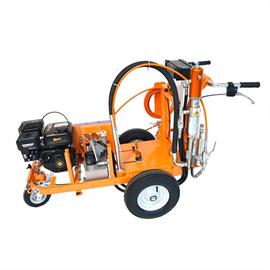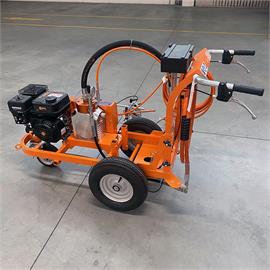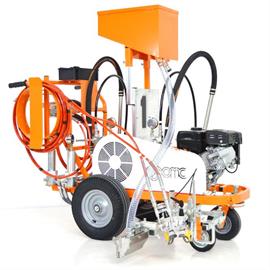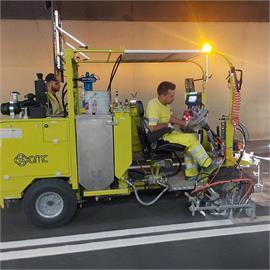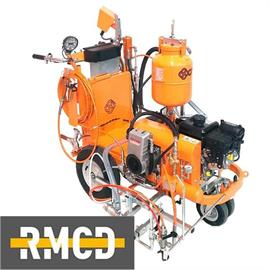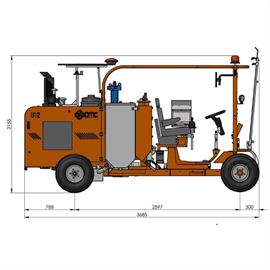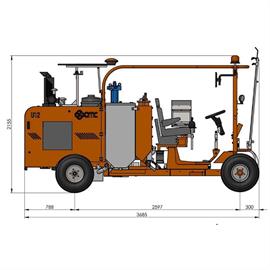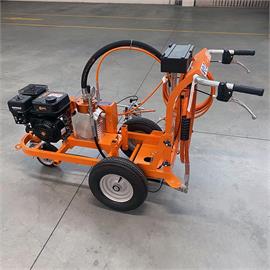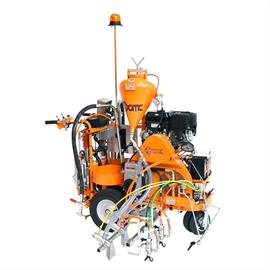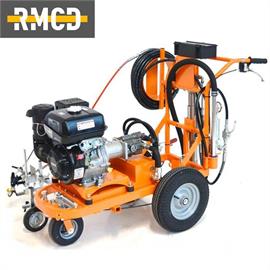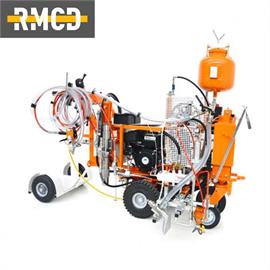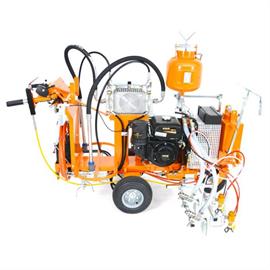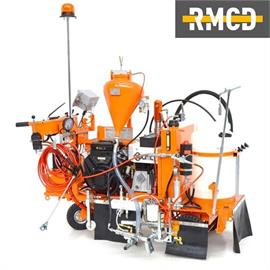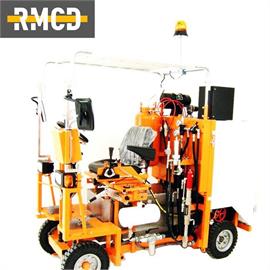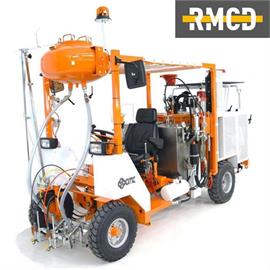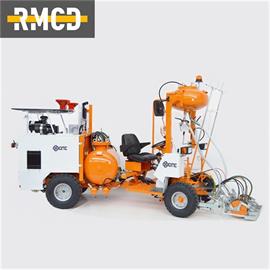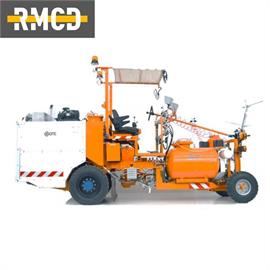Injection-moulded plastics
Spray plastics can be applied to a wide range of variants. The simplest one is certainly to apply them by means of an airless or airspray machine and to cure them by means of hardener beads in a sprinkling process. Very simple - with one disadvantage. If too few hardener beads are applied, the material will not harden. The marking is cured on the surface but has no adhesion to the substrate.
The 1:1 procedure is much simpler. In this process, a pre-activated material A is sprayed with component B 1:1 jet in jet. The advantage is the simple visual control of the system. The disadvantage is that the pre-activated material must also be consumed.
98:2 systems are available in different variants:
Open - means that the spray plastic (98%) is also mixed with the hardener (2%) jet in jet. The liquid hardener is sprayed into the sprayed plastic by means of a low-pressure system. The advantage of this is that you can stop the machine at any time without the hardening of anything in the system. The disadvantage is that it is difficult to visually check whether hardener is also being injected.
In the closed system, ink and hardener are combined in a mixing chamber. The advantage lies in the electronic monitoring of whether sufficient spray plastic and hardener are actually mixed. The disadvantage becomes obvious when the machine is stopped for longer and more frequent periods. In this case, the mixing chamber, hoses and nozzles may have to be freed (rinsed) from the activated material more often.
The 1:1 procedure is much simpler. In this process, a pre-activated material A is sprayed with component B 1:1 jet in jet. The advantage is the simple visual control of the system. The disadvantage is that the pre-activated material must also be consumed.
98:2 systems are available in different variants:
Open - means that the spray plastic (98%) is also mixed with the hardener (2%) jet in jet. The liquid hardener is sprayed into the sprayed plastic by means of a low-pressure system. The advantage of this is that you can stop the machine at any time without the hardening of anything in the system. The disadvantage is that it is difficult to visually check whether hardener is also being injected.
In the closed system, ink and hardener are combined in a mixing chamber. The advantage lies in the electronic monitoring of whether sufficient spray plastic and hardener are actually mixed. The disadvantage becomes obvious when the machine is stopped for longer and more frequent periods. In this case, the mixing chamber, hoses and nozzles may have to be freed (rinsed) from the activated material more often.
